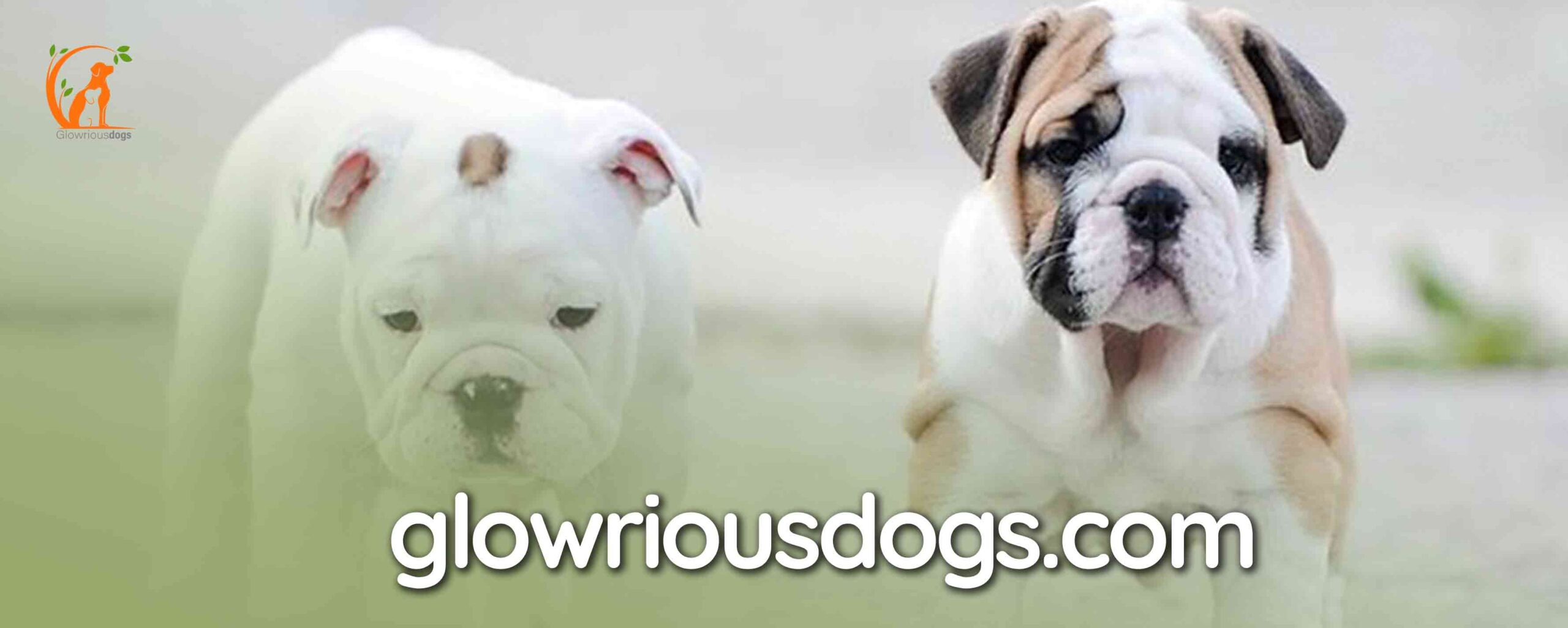English Bulldogs were originally bred for bull-baiting, a brutal sport that involved dogs fighting bulls. This practice was banned and the breed’s violent tendencies were gradually bred out, producing the friendly and docile English Bulldogs seen today.
English Bulldogs were bred for bull-baiting, a violent sport that involved dogs fighting bulls. However, as the sport became unpopular, breeders worked to remove the aggressive tendencies, resulting in the affectionate and gentle English Bulldogs that are beloved today. These dogs are now largely raised as companion animals and known for their wrinkled face, muscular build, and distinctive “sour milk” odor.
While their lineage may have a violent past, English Bulldogs have adapted to become one of the most devoted and loving family pets. With their distinctive appearance, playful nature, and friendly temperament, English Bulldogs are adored by dog enthusiasts all over the world.
The Origins And History Of English Bulldogs
The English Bulldog is a breed with a rich history and fascinating origins. Understanding the background of these dogs can provide insights into their characteristics and traits that we see today. Early on, during the Elizabethan era in England, Bulldogs were used in bull-baiting sports alongside larger animals. This role of the Bulldog, where its tenacity and strength were highly valued, led to challenges in shaping their physical features and temperaments.
During the medieval era, Bulldogs became popular among working-class people due to their usefulness in various tasks, such as guarding homes and working with livestock. These dogs were known for their courage and resilience, as well as their loyalty to their owners.
| Early origins of the English Bulldog | The role of Bulldogs in medieval England |
|---|---|
| The English Bulldog has a long history that dates back to the Elizabethan era. | Bulldogs were popular working dogs in medieval England, known for their courage and loyalty. |
| The breed’s original purpose was in bull-baiting sports, where their strength and tenacity were on display. | English Bulldogs were used for various tasks including guarding homes and working with livestock. |
The historical context of English Bulldogs sheds light on the development of their physical characteristics and temperaments. Understanding their origins can help us appreciate the breed’s unique qualities and the role they play in our lives today.
The Purpose Of English Bulldog Breeding
English Bulldogs were originally bred for the cruel sport of bull-baiting. This sport involved tying a bull to a stake and setting dogs on it to pin it down. The Bulldogs had to be tenacious, fearless, and possess strong jaws and a powerful bite in order to effectively attack and hold onto the bull. They were selectively bred over centuries for these traits, resulting in their unique physical characteristics such as the large, square head, strong neck, and muscular body. Their loose, wrinkled skin was also designed to protect them from injuries during bull-baiting. However, after bull-baiting was banned in the 19th century, English Bulldogs found a new purpose as friendly and loyal companions. Their endearing temperament and protective nature made them popular as family pets and guard dogs. Today, English Bulldogs are known for their love of people, gentle demeanor, and willingness to please their owners. They continue to be cherished and adored as beloved companions.
Evolution Of English Bulldog Breeding
The English Bulldog is a breed that has undergone significant changes over the years. Initially, they were bred for bull-baiting, a popular sport in medieval England. However, as bull-baiting declined in the 19th century due to being outlawed, the popularity of Bulldogs also waned.
The Victorian era saw a shift in Bulldog breeding, as enthusiasts focused on refining the breed’s appearance and temperament. Through selective breeding, Bulldogs started to exhibit a more docile and friendly nature, making them suitable as companions.
As the breed evolved, their appearance also changed. Bulldogs became more compact, with shorter legs, a broader chest, and a distinct pushed-in nose. These changes contributed to their iconic, recognizable look that we see today.
Overall, the English Bulldog’s breeding history reflects the transition from a working dog used for bull-baiting to a beloved companion breed prized for its unique characteristics.
Modern English Bulldogs: Breeding For Health And Temperament
The English Bulldog is a breed that has evolved over centuries for specific purposes. Originally, Bulldogs were bred for various tasks such as bull-baiting and as guard dogs. However, over time, the focus of breeding has shifted towards enhancing their health and temperament.
| Health issues affecting English Bulldogs | Breeding objectives to improve Bulldog health |
|---|---|
| Brachycephalic Syndrome | Emphasizing breeding for longer muzzles and improved respiratory function |
| Joint problems | Including selecting breeding pairs with healthy joints and promoting exercise |
| Skin allergies | Focusing on breeding for better skin health and reducing allergic reactions |
| Eye issues | Implementing selective breeding to minimize the occurrence of eye conditions |
Besides addressing health issues, modern breeding practices also prioritize temperament and suitability as pets. Breeders strive to produce Bulldogs with friendly and calm personalities, making them ideal companions for families and individuals. This focus on temperament helps ensure that Bulldogs can adapt to various environments and interact well with people.
The Versatility Of English Bulldogs
The versatility of English Bulldogs is showcased in various aspects of popular culture. Bulldogs have long been celebrated as mascots and symbols, representing determination, strength, and loyalty. Their distinctive appearance and tenacious nature have made them popular choices for emblematic purposes. In the sports realm, English Bulldogs often serve as the beloved mascots for teams and organizations, adding a touch of charm and enthusiasm to the fan experience. Beyond the realm of sports, Bulldogs have also made their mark in entertainment. Their adorable and sometimes comical antics have been featured in movies, television shows, and advertisements, providing endless enjoyment for audiences worldwide. From their iconic bulldog stance to their wrinkled faces and expressive eyes, English Bulldogs continue to
capture our hearts with their unique charm.
English Bulldogs As Therapy Dogs
Characteristics that make Bulldogs suitable for therapy work:
Bulldogs possess a unique set of qualities that make them suitable for therapy work. Their calm and gentle nature allows them to provide comfort and support to individuals in various therapy settings. Bulldogs are known for their affectionate and friendly temperament, which helps create a positive and soothing environment for those in need. Additionally, their tolerance and patience allow them to handle stressful situations with composure, making them perfect for therapy work.
Training and certification of Bulldogs as therapy dogs:
Bulldogs undergo rigorous training and certification to become therapy dogs. They receive specialized obedience training that focuses on basic commands, leash manners, and socialization skills. Additionally, they are trained to exhibit good behavior in various therapy environments, including hospitals, nursing homes, and schools. Bulldogs must pass a certification exam that assesses their ability to remain calm, well-behaved, and responsive during therapy sessions.
The presence of Bulldogs in therapy settings has a profound impact on individuals’ emotional and mental well-being. Their comforting and non-judgmental nature helps reduce anxiety and stress levels, providing a sense of reassurance and safety. Bulldogs have been proven to elevate mood and increase social interaction among patients. Moreover, their playful and affectionate behavior can bring smiles and laughter to those in therapy, encouraging a positive and optimistic outlook.
Bulldogs In Competitive Dog Sports
English Bulldogs have a rich history in competitive dog sports. They are known for their distinctive appearance and friendly nature, which makes them stand out in various activities. One popular sport for Bulldogs is agility and obedience training. Despite their stocky build, Bulldogs can excel in agility courses by navigating obstacles with determination and focus. Their ability to follow commands makes them ideal candidates for obedience training as well.
Another area where Bulldogs can showcase their strength is in weight pulling competitions. These events test the dog’s ability to pull a sled or weighted object over a specific distance within a time limit. Bulldogs, with their strong muscles and determination, can surprise many with their pulling power.
Bulldogs also participate in conformation shows, where they are judged based on how well they conform to breed standards. This involves evaluating their physical traits such as their head shape, body proportion, and movement. Bulldogs are often the star player in these shows due to their unique and recognizable features.
The Enduring Appeal Of English Bulldogs
English Bulldogs have a long history as beloved family pets. Their distinctive appearance, characterized by a stocky build, broad head, and wrinkled face, has captivated dog enthusiasts for centuries. Despite their sometimes-intimidating appearance, Bulldogs are known for their affectionate and gentle nature, making them excellent companions for families of all sizes.
In addition to their endearing personalities, Bulldogs are also relatively low-maintenance pets. They have low exercise requirements, making them suitable for individuals or families with a more laid-back lifestyle. However, it is important to note that they may require extra attention to maintain their health and well-being. Bulldogs are prone to certain health issues, such as obesity and respiratory problems, so proper caring and regular veterinary check-ups are essential in ensuring their longevity.
For those considering adopting or purchasing an English Bulldog, there are some important tips to keep in mind. Firstly, it is recommended to do thorough research and find a reputable breeder or rescue organization to ensure the health and background of the dog. Bulldogs can be expensive to acquire, so it is crucial to be prepared for the financial commitment they require.
Additionally, prospective owners should consider the specific needs of Bulldogs, such as their potential tendency for stubbornness and the importance of positive reinforcement training methods. Providing a stable and loving environment, regular exercise, a balanced diet, and proper grooming are all key factors in caring for an English Bulldog.
In conclusion, English Bulldogs have been bred for their amiable and loyal temperament, making them an enduring favorite among dog lovers. By understanding their unique needs and providing the necessary care, Bulldogs can thrive in a loving home environment.
Conclusion
English Bulldogs were bred for bull-baiting, a blood sport that eventually became illegal. Their muscular build, tenacity, and strong grip made them ideal for this brutal activity. Despite their violent past, English Bulldogs have undergone a transformation and are now cherished as loyal, affectionate companions.
These dogs may have a tough exterior, but they possess a gentle and friendly disposition that makes them a favorite choice for families and individuals alike.
Frequently Asked Questions Of What Were English Bulldogs Bred For
What Were English Bulldogs Originally Used For?
English Bulldogs were originally used for the sport of bull-baiting, which involved fiercely attacking bulls for entertainment.
What Job Were Bulldogs Bred For?
Bulldogs were bred for the job of bull baiting, a sport that involved dogs attacking bulls.
Why Were Bulldogs Bred The Way They Are?
Bulldogs were bred with their distinct physical features, including a flat face and sturdy body, for specific tasks. Originally used for bull-baiting, their build allowed them to excel in the sport. Over time, their temperament and characteristics were refined to create the friendly and loyal companions they are today.
What 2 Dogs Make An English Bulldog?
An English bulldog is a cross between two breeds, the English bulldog and another dog, usually a bullmastiff or a pug.











